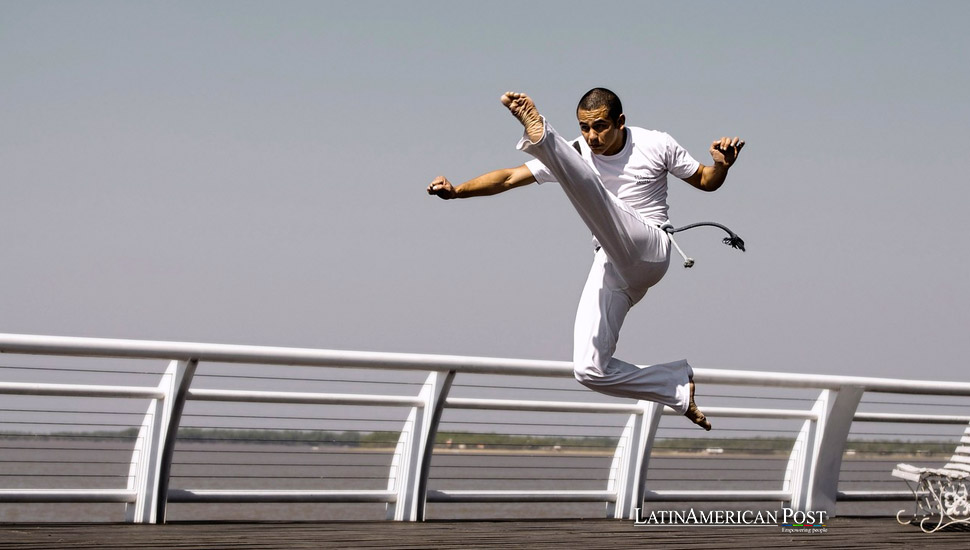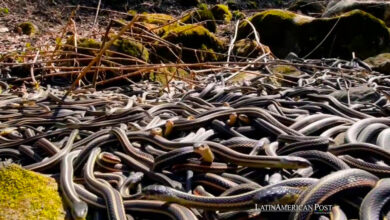Capoeira: From Brazil’s Slaves to the World Stage

Capoeira, a unique blend of martial arts, dance, and music with African-Brazilian roots, has evolved from its origins as a tool of resistance among enslaved people to a global practice embraced in over 150 countries. This is the journey of globalization.
Capoeira is much more than just a martial art. Its history reflects Brazil’s cultural and social struggles, where enslaved Africans in the 16th century sought freedom from oppression. Emerging from African traditions, capoeira is believed to have its roots in the martial practices of Central African warriors, though some also credit Brazilian indigenous dances for influencing its development. Despite the debate around its precise origins, one fact remains clear: enslaved Africans created capoeira as a way to resist the harsh realities of their enslavement.
For centuries, capoeira served as a form of covert resistance. Disguised as a dance, enslaved people could practice fighting techniques under the watchful eyes of their masters, preparing themselves for potential escapes or rebellion. The use of music and rhythmic movements hid the martial nature of capoeira, making it appear as though they were engaged in playful dancing rather than training for battle.
This art form, which combines sport, music, and ritual, expresses defiance and survival. Capoeira practitioners, known as capoeiristas, created a culture as much about physical prowess as community and identity. The traditions and values established during this time, such as respect for one’s mestre (master) and the importance of community, remain fundamental to Capoeira even today.
Despite its cultural importance, capoeira was criminalized in Brazil for decades. Authorities feared its use as a tool for rebellion, and it was banned well into the 20th century. However, by 1937, the practice was legally permitted once again. Ironically, once an outlawed form of resistance, capoeira symbolized Brazilian national identity. In the following years, the Brazilian government took steps to institutionalize the art, including creating a national federation of capoeira. Today, it is recognized as an official sport of Brazil.
The Globalization of Capoeira
The international journey of capoeira began in earnest during the 1960s. As Brazil sought to promote its culture abroad, capoeira became one of its critical cultural exports. The first capoeira schools in the United States were established in New York and California in the early 1970s, and throughout Europe, capoeira began to gain a foothold. This was a significant period in the spread of capoeira as practitioners, known as mestres, moved abroad to teach and perform.
The 1980s saw an even greater push for capoeira’s global reach. Economic hardship in Brazil, during a time known as the “lost decade,” led many mestres to seek better opportunities abroad. Capoeiristas from lower-income families in Brazil migrated to the U.S. and Europe in search of work, often supplementing their income with underemployment while building capoeira schools. Capoeira became a way for these individuals to earn a living while preserving their cultural heritage.
The increasing visibility of capoeira in mainstream media also helped its global spread. In the 1990s, capoeira appeared in movies, video games, and advertisements, drawing international attention to this unique art form. Multinational companies featured capoeira in commercials, and films depicted the acrobatic movements of capoeira as an exotic and influential martial art, capturing the imagination of global audiences.
According to the International Federation of Capoeira, there are now over eight million capoeira practitioners worldwide, with six million in Brazil and two million across 150 countries. This remarkable expansion is primarily the result of the capoeira diaspora, as Brazilian mestres emigrated to establish schools abroad. Today, capoeira is taught in countries as diverse as Japan, the United States, Germany, and Angola, where capoeira’s African roots hold deep cultural significance.
Teaching and Preserving Tradition Abroad
While capoeira has achieved global recognition, its internationalization has raised important questions about authenticity and the preservation of tradition. In many ways, Capoeira remains a martial art of the diaspora, deeply tied to its Brazilian origins. The language of capoeira abroad is still Portuguese, and students are often required to learn traditional songs and terminology in the original language. This linguistic and cultural connection to Brazil is a vital part of the capoeira experience for many.
This cultural connection is reinforced by the organizational structure of capoeira schools, which often function as global networks with ties to a mother school in Brazil. Instructors abroad typically maintain close relationships with their Brazilian Mestre, regularly visiting for seminars and workshops to ensure the proper transmission of techniques and values. Foreign capoeira schools often pay fees to their Brazilian counterparts for the right to use the group’s name and brand and for access to teaching materials and merchandise like uniforms, musical instruments, and DVDs.
However, the global spread of capoeira has also created challenges. The art’s emphasis on the exotic and its Brazilian roots has led to cultural branding that some practitioners view as limiting. There is a sense of ambivalence within the capoeira community, as the closed network traditions of capoeira groups—where loyalty to one’s mestre and group is paramount—sometimes clash with the broader, more globalized perspective of martial arts in other parts of the world.
This tension is compounded by the perception that non-Brazilian instructors lack the authenticity of their Brazilian counterparts. In some circles, there is prejudice against non-Brazilian meters, with claims that they do not fully represent the “true” capoeira. Despite this, capoeira continues to be popular abroad, with more foreign instructors and practitioners contributing to the art form’s evolution.
The Future of Capoeira
Capoeira’s global expansion has not diminished its ties to Brazil but has reinforced its cultural significance on the world stage. Every important capoeira school has affiliated groups abroad, and the income from these foreign affiliates often represents a significant portion of the revenue for Brazilian capoeira schools. Internationalization, while a source of financial support, also presents challenges, as Brazilian meters must maintain control over their global networks while ensuring the art’s traditions are upheld.
Many foreign practitioners travel to Brazil to train with renowned measures to strengthen ties between the global capoeira community and Brazil. These “apprenticeship pilgrims,” as they are sometimes called, seek legitimacy by learning capoeira in their homeland and immersing themselves in the culture that created it. In return, Brazilian meters frequently travel to foreign affiliates, conducting workshops and ceremonies to maintain the integrity of the art.
Social media has played a vital role in connecting capoeiristas around the world. Online communities allow practitioners to share experiences, exchange ideas, and strengthen their bonds across national borders. This virtual network helps to bridge the gap between the closed, traditional structure of capoeira groups and the broader global community of capoeira practitioners.
Also read: American Football Takes Root: NFL’s Historic Game in Soccer-Crazed Brazil
Today, capoeira is more than just a martial art—it is a global cultural phenomenon that unites people from different backgrounds and countries. Whether in Brazil or abroad, capoeira continues to evolve, drawing on its rich history of resistance and resilience while embracing new forms and practices. As Capoeira’s global presence continues to grow, its practitioners remain committed to preserving the traditions and values that have made it one of the world’s most unique and powerful cultural expressions.





